challenges facing express delivery services in canada's urban centres
challenges facing express delivery services in canada's urban centres
challenges facing express delivery services in canada's urban centres
You also want an ePaper? Increase the reach of your titles
YUMPU automatically turns print PDFs into web optimized ePapers that Google loves.
Institute of Hous<strong>in</strong>g & Mobility<br />
Challenges <strong>fac<strong>in</strong>g</strong> the EDS <strong>in</strong>dustry <strong>in</strong> Canada's <strong>urban</strong> <strong>centres</strong><br />
APPENDICES<br />
Appendix 1: Literature review of Urban Logistics strategies<br />
This section reviews issues associated with <strong>urban</strong> freight <strong>in</strong> <strong>urban</strong> <strong>centres</strong>. In some Canadian <strong>urban</strong><br />
areas commercial vehicles are estimated to account for approximately 15% of all vehicular<br />
activity. Therefore a review of strategies to improve the flow of commercial vehicles and reduce<br />
their impact on traffic and environment is of great value. (Hunt and Stefan, 2007). It is also<br />
important to note that cities across the world are struggl<strong>in</strong>g with traffic congestion, which has<br />
worsened over the years and, if left unaddressed, is unlikely to fix itself.<br />
While research suggests that freight characteristics do not vary greatly <strong>in</strong> different <strong>urban</strong> <strong>centres</strong><br />
(Dablanc, 2007), other factors such as road geometry and local governance make it impossible to<br />
f<strong>in</strong>d one solution that will be appropriate for all cities. Regrettably, the most common action taken<br />
by cities is strict regulation or ban on large truck traffic, lead<strong>in</strong>g to the frustration of freight<br />
companies (Dablanc, 2007). These companies are rarely consulted when such policies are<br />
developed or put <strong>in</strong>to practice leav<strong>in</strong>g freight operators and logistic companies to work around<br />
regulations and f<strong>in</strong>d their own solutions, which could hardly be regarded as effective transport<br />
plann<strong>in</strong>g.<br />
While LTL freight is dest<strong>in</strong>ed for load<strong>in</strong>g docks, courier and same day messenger vehicles have to<br />
deliver packages, parcels, and letters to bus<strong>in</strong>esses <strong>in</strong> downtowns, and hence are often forced to<br />
park on roads as dedicated park<strong>in</strong>g spots are not provided for the <strong>in</strong>dustry. In 2006 alone, three<br />
major <strong>express</strong> <strong>delivery</strong> companies (FedEx, United Parcel Service and Purolator) were awarded<br />
34,000 park<strong>in</strong>g tickets amount<strong>in</strong>g to approximately $1.5 million <strong>in</strong> f<strong>in</strong>e (Chung, 2007). Currently<br />
these f<strong>in</strong>es are <strong>in</strong>cluded <strong>in</strong> the cost of do<strong>in</strong>g bus<strong>in</strong>ess, however a solution is needed where couriers<br />
and same day messengers can work with municipal governments to develop solutions to remedy<br />
the situation.<br />
Def<strong>in</strong><strong>in</strong>g Urban Freight<br />
Urban freight can be def<strong>in</strong>ed as the movement of goods with<strong>in</strong> a city. This comprises both the<br />
freight that must be distributed once it arrives <strong>in</strong>to a city and the deliveries made between<br />
locations <strong>in</strong> the same city. Urban freight can be further broken down <strong>in</strong>to two sub categories: LTL<br />
freight carriers and couriers and same day messengers. Couriers and <strong>express</strong> <strong>delivery</strong> companies<br />
often face different <strong>challenges</strong> than those deal<strong>in</strong>g with LTL freight.<br />
Couriers and <strong>express</strong> <strong>delivery</strong> logistics<br />
Express <strong>delivery</strong> companies most often transport letters, parcels, and packages to and from city<br />
<strong>centres</strong>. The <strong>in</strong>tercity modes employed by these companies, such as the cargo planes used by<br />
FedEx and UPS, are not analyzed here. Instead the focus is on the <strong>urban</strong> part of the trip. For<br />
deliveries, couriers often employ small trucks or vans s<strong>in</strong>ce they require less capacity to carry the<br />
relatively small parcels and letters that are often delivered by these couriers.<br />
Page 57



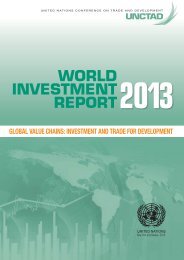



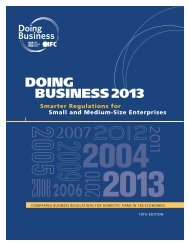

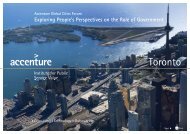
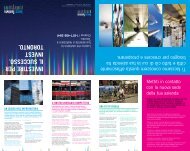
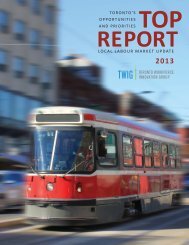


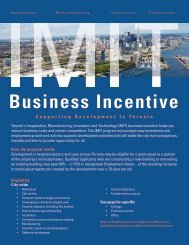

![Creative City Planning Framework [PDF] - City of Toronto](https://img.yumpu.com/24270607/1/190x245/creative-city-planning-framework-pdf-city-of-toronto.jpg?quality=85)